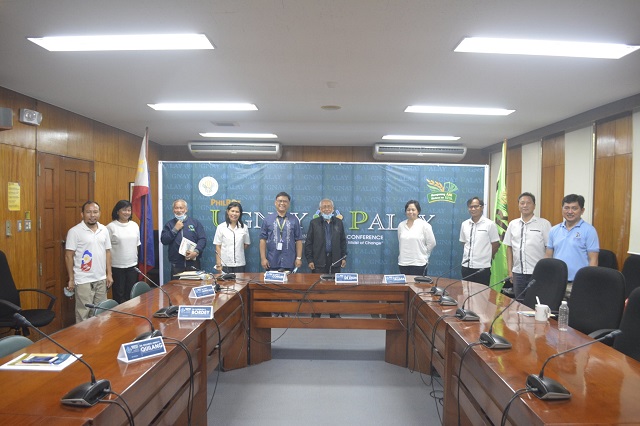
New strategies toward rice security were emphasized during the 32nd National Rice R4D conference hosted by the Department of Agriculture-Philippine Rice Research Institute (DA-PhilRice), Nov. 4, in Science City of Muñoz, Nueva Ecija.
With the theme, “Sustaining high-quality rice science in the midst of change,” PhilRice presented its two programs and strategic vision: Strategically Modernized and Robust Technologies for a Competitive and Secure Rice Industry (SMARTerRice) and the Rice Business Innovations System (RiceBIS). Participated by around 1,000 rice stakeholders, the conference, which was previously conducted face-to-face, shifted to an online platform this year in response to the COVID-19 pandemic.
“The rice sector is vulnerable and it faces challenges time and again. To be resilient, we must revisit and revamp our systems with strategies that are appropriate and relevant to this time and age,” Dr. William D. Dar, secretary of the Department of Agriculture, said in his speech.
Commencing in 2021, SMARTerRice will use climate information and data science analytics with cutting-edge intelligence and electronics technologies such as mobile apps, internet of things (IoT), robotics, and unmanned aerial vehicles to achieve finer management control.
“SMARTerRice revolutionizes and modernizes our old practices and systems, particularly on the incorporation of mechanization and digital technologies into rice farming geared towards higher productivity, increased efficiency, and enhanced profitability,” Dar said.
On the other hand, RiceBIS aims to transform rice-based farming communities into inclusive, competitive, and sustainable agroenterprise community models with an increased income of 25%.
Reports show that the program has established 23 RiceBIS communities in major rice-producing municipalities in the Philippines; organized more than 3,000 farmers; and covered more than 2,000ha for production and collective marketing.
The communities are also engaged in at least one of the enterprises developed, which include palay trading, brown and polished rice marketing, agricultural inputs trading, custom service provision, and seed production. Technologies promoted through RiceBIS also contributed to a 700kg/ha average yield increase in the 2018 wet season and 580kg/ha in the dry season cropping.
Dar noted that RiceBIS has shifted from the conventional technology transfer to the agribusiness framework.
“This provides the rice farmers an avenue to better access to the market, enhanced capacity for production, organization building and management, and entrepreneurship,” he said.
Meanwhile, Dr. John C. de Leon, PhilRice executive director, presented the Institute’s strategic plan from 2017 to 2022.
He said the plan aims to increase rice yield by 1t/ha in irrigated areas and 0.5t/ha in rainfed areas, reduce palay production cost to 10/kg, and reduce postharvest losses to 12% by 2022 in the project sites for the rice producers to be competitive in an integrated ASEAN market.
Guided by the vision, “A rice-secure Philippines,” the strategic plan was created in consultation with major partners and key stakeholders of the rice sector.




